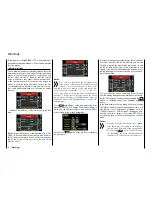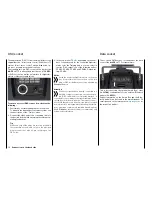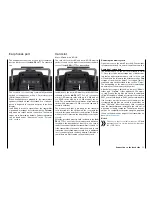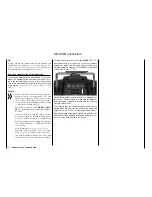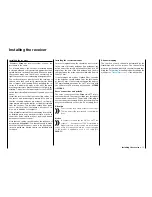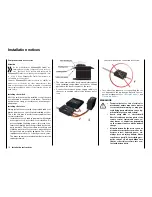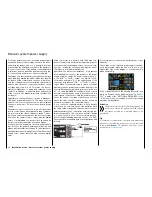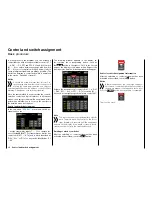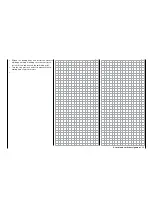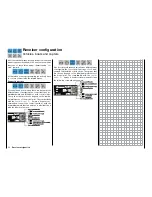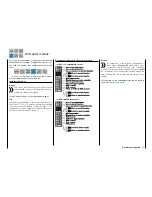
Charging the receiver battery
The charging cable (No.
3021
) can be connected di-
rectly to the receiver battery to charge it. If the battery
in the model is connected by a power supply cable
(No.
3046
,
3934
,
3934.1
or
3934.3
), the battery is
charged via the charging socket integrated in the
switch, or a separate charging connection. The switch
for the power supply cable must be set to "OFF" for
charging
Polarity of the receiver battery plug
.
Receiver system power supply
NiMH battery packs with 4 cells
With a traditional 4-cell pack, you can reliably operate
your
Graupner
HoTT system providing that the above
conditions are observed, and assuming that the packs
have a sufficient capacity and charge.
NiMH battery packs with 5 cells
Battery packs with five cells offer greater leeway in
comparison to 4-cell packs.
You should note, however, that not every servo avail-
able on the market can handle the voltage from a
5-cell pack over the long term, especially when the
pack is freshly charged. Some of these servos audibly
"growl" when operated with a 5-pack.
Notice
You should therefore note the specifications for
your servo before you choose to use a 5-cell
pack.
LiFe packs with 2 cells
Given the above considerations, these cells are the
best choice.
LiFe cells are also available in a hard plastic housing
to protect against mechanical damage. Like lithium
polymer cells, LiFe cells can be charged quickly with
suitable chargers and are comparably robust.
In addition, this type of cell can undergo significantly
more charging/discharging cycles than conventional
LiPo batteries. The comparatively high rated voltage
of 6.6 V of two cell LiFe battery packs does not pose
any problems to
Graupner
HoTT receivers or the ser-
vos, speed controllers, gyros, etc. which are approved
for operation with this higher voltage.
Attention
However, practically all of the previously market-
ed servos, speed controllers, gyros, etc. as well
as many which are offered today have a permis-
sible operating voltage range of 4.8 to 6 V. Stabilized
voltage control such as the PRX (No.
4136
) is therefore
needed to connect them to the receiver. Otherwise, the
connected devices may quickly become damaged.
LiPo packs with 2 cells
LiPo batteries are lighter yet they offer the same ca-
pacity of NiMH batteries. LiPo batteries also come in
a hard plastic housing to protect against mechanical
damage.
The comparatively high rated voltage of 7.4 V of two
cell LiPo battery packs does not pose any problems
to
Graupner
HoTT receivers or the servos, speed con-
trollers, gyros, etc. which are approved for operation
with this higher voltage.
Attention
However, practically all of the previously market-
ed servos, speed controllers, gyros, etc. as well
as many which are offered today have a permis-
sible operating voltage range of 4.8 to 6 V. Stabilized
voltage control such as the PRX (No.
4136
) is therefore
needed to connect them to the receiver. Otherwise, the
connected devices may quickly become damaged.
21
Installation notice - Receiver system power supply
Summary of Contents for mz-24 PRO
Page 13: ...13 Personal notes...
Page 19: ...19 Personal notes...
Page 37: ...37 Personal notes...
Page 59: ...Touch 59 Base menu Model selection...
Page 79: ...79 Personal notes...
Page 89: ...89 Personal notes...
Page 115: ...115 Personal notes...
Page 153: ...Helicopter model function menus Common function menus 153 Personal notes...
Page 169: ...169 Personal notes...
Page 187: ...187 Personal notes...
Page 199: ...199 Personal notes...
Page 207: ...Fixed wing model function menus System menus 207 Personal notes...
Page 211: ...211 Personal notes...
Page 219: ...219 Personal notes...
Page 237: ...237 Personal notes...
Page 238: ...238 Personal notes...
Page 239: ...239 Personal notes...


